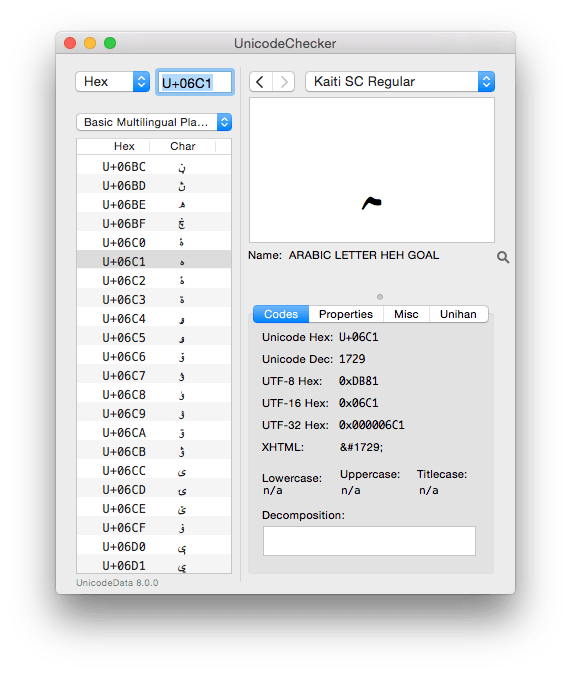Hello: This typeface does not belong to the basic Arabic characters, but the typeface for the Urdu language and identifying Iraqi Kurdistan and is also used in ancient Persian, Urdu language shared with Persian characters while partnering with Persian Arabic typefaces
For example: “Arabic Unicode” contains a set of interpolated “heh” The question is: Are all of these typefaces Arab? No … It is a belong to a group of languages
This is a “Arabic heh”
U+0647
U+0629
This “Urdu heh” her name in Unicode is"goal"
U+06C1
U+06C2
U+06C3
and This is a “Persian heh”
U+06D5
U+06C0
They are similar to Arabic in shape but are similar to the method in Urdu
Let’s turn to another group like “yeh”
This is a “Arabic yeh”
U+0649
U+064A
U+0626
This “Urdu yeh” her name in Unicode is"barree"
U+06D2
U+06D3
and This is a “Persian yeh”
U+06CC
What do you see in the examples
First: “Persian” using the same typeface, “the Arab core,” but in a different way, for this we derive all the “Persian character” of the “Arab character” in “Panel Character” by components
Second, the different “characters Urdu” for “basic Arabic typefaces” That will not be there any derivation, but "the whole design"for it
I said in an earlier article: must be considered “Naming Typefaces” for many reasons … For example there is the “Unicode” a set of typefaces do not carry the names, but a description of the shape, why?!
The reason: there is a “basic Arabic typeface” of the same name! What is the solution here?!
Two methods have been used in “Unicode” To resolve this issue, both error
The first method: Double “Character Name” from “Character Arab core” as in this example
Another method: Description of this typeface by shape instead of his name!!
Typefaces that described “as Shape” instead of the name in the “Unicode” and that do not belong “to the extension of the Arab” is “charset Sindhi” and the little ones for “Uthmani” The “Arab Supplement” are “African characters” are no longer used at the present time. But some adds for scientific and commercial reasons
What is the point of this conversation?!
If you draw “typefaces Arabic, Persian, Urdu, Pashto, Sindhi” will be painted all “Arab character” and “character related to the Arab” was not left only Arab Annex
So “should” put this category in the sidebar to GlyphsApp
